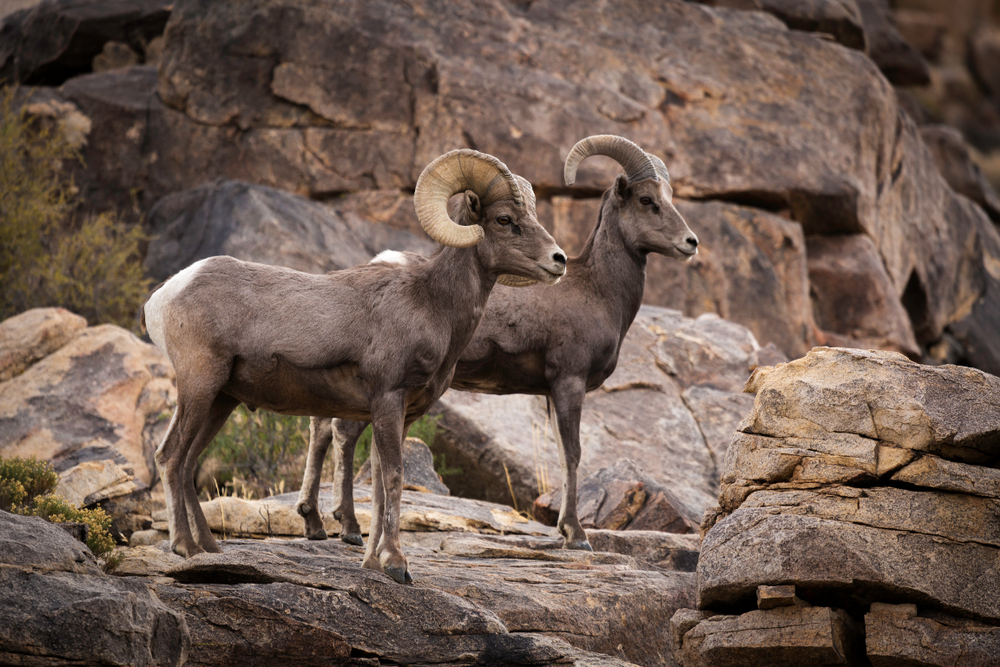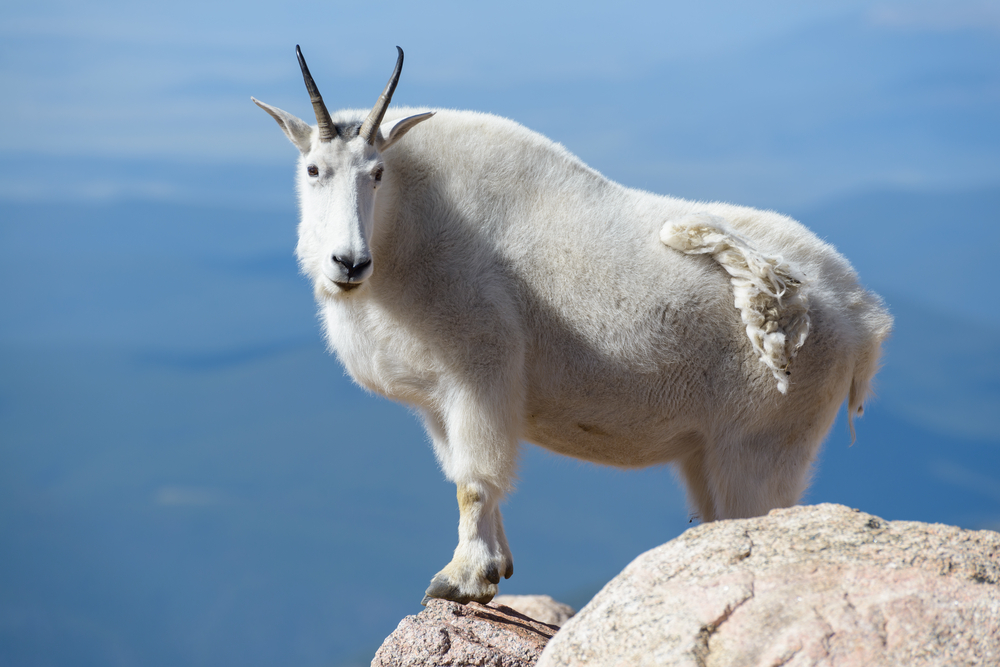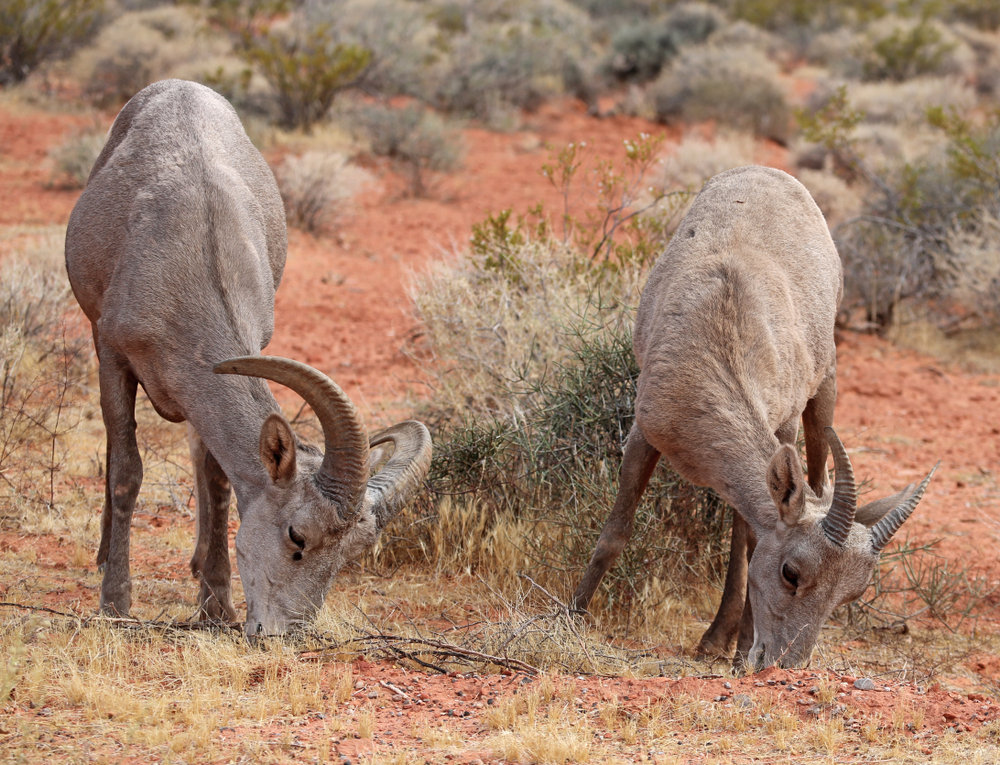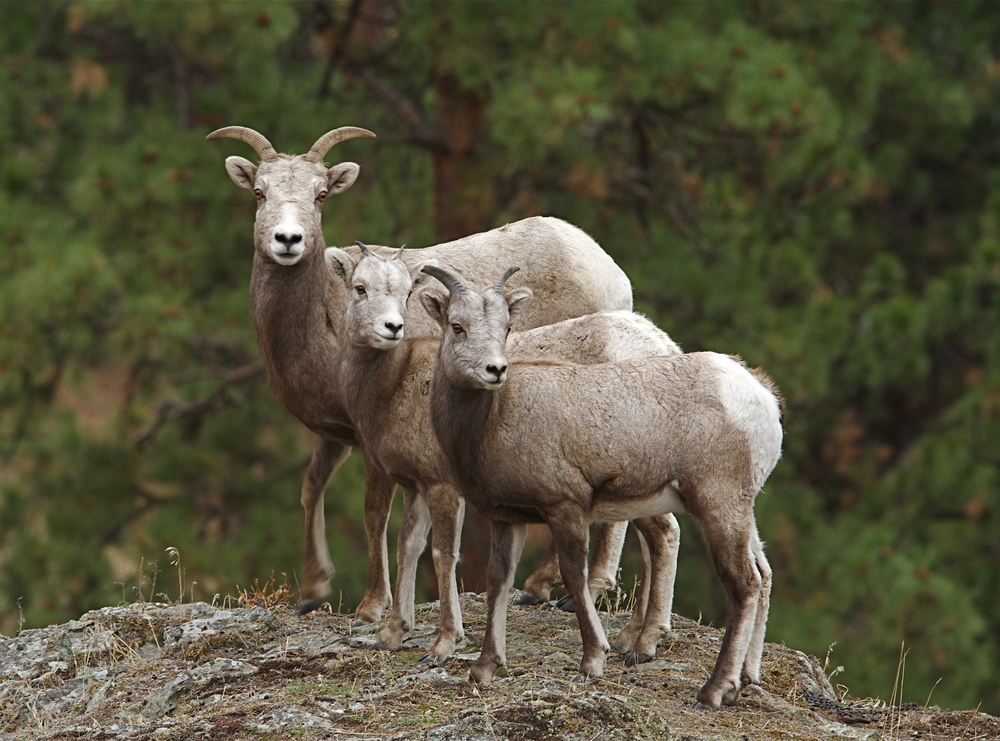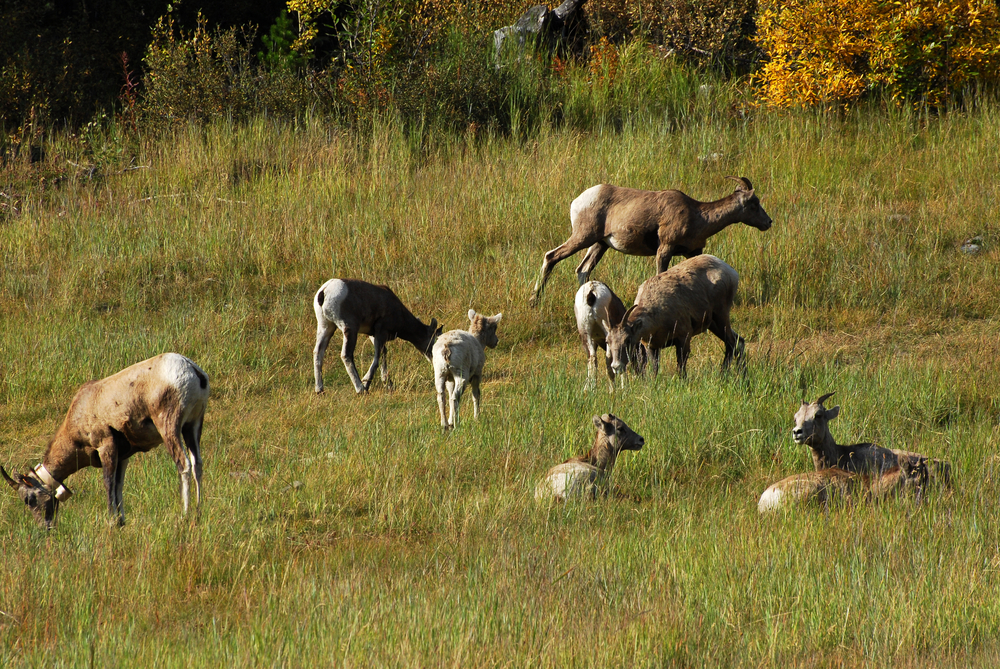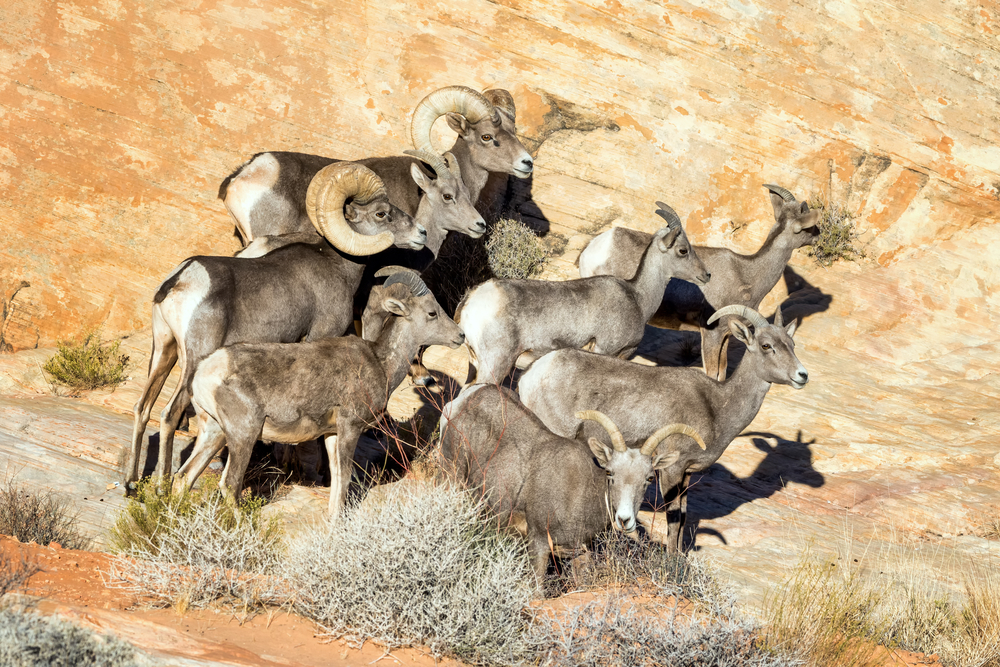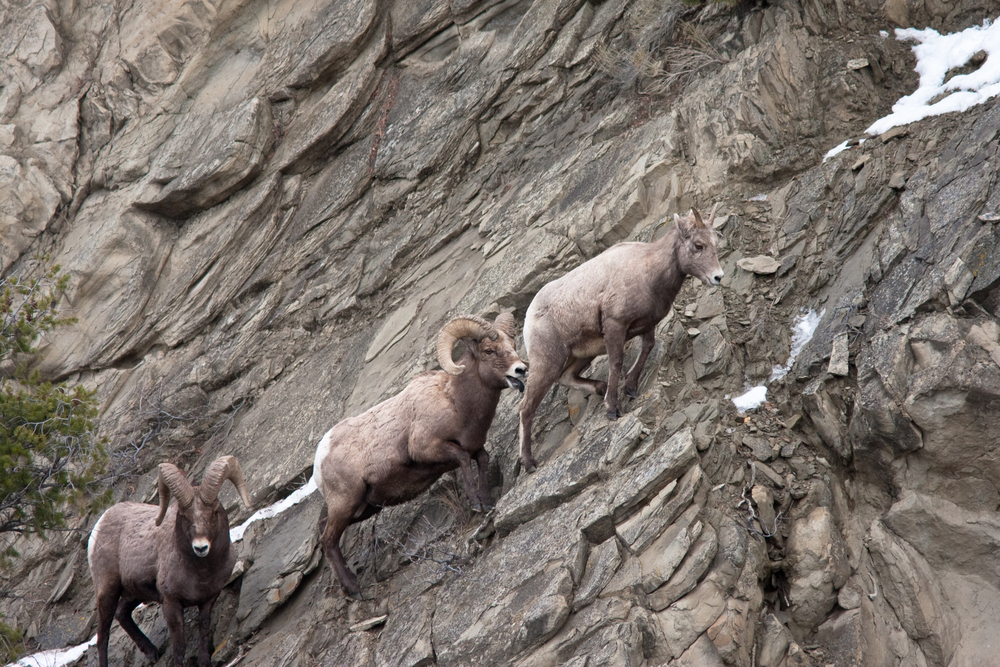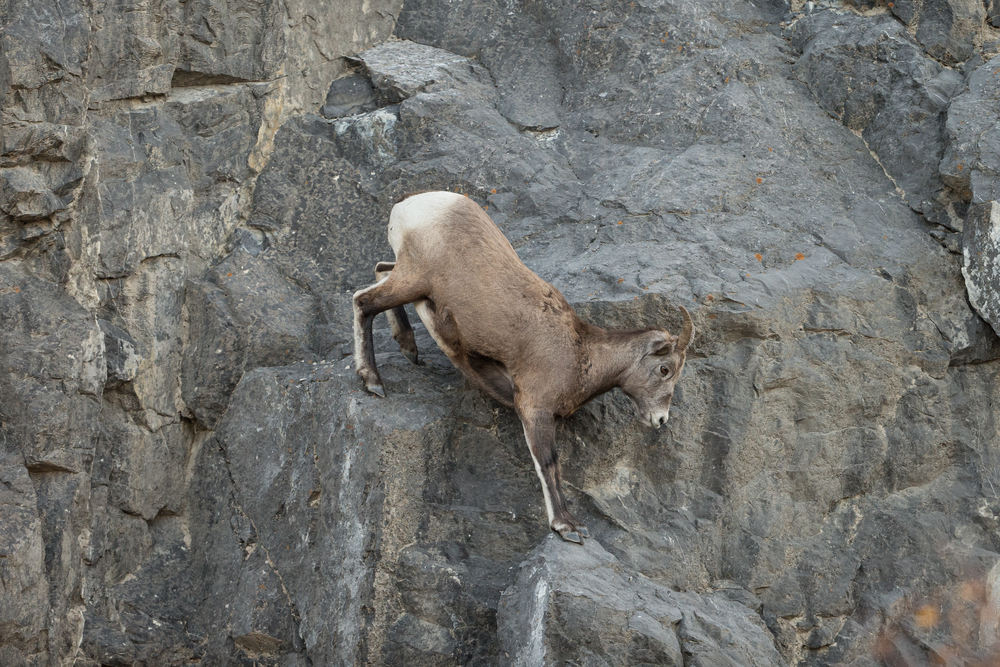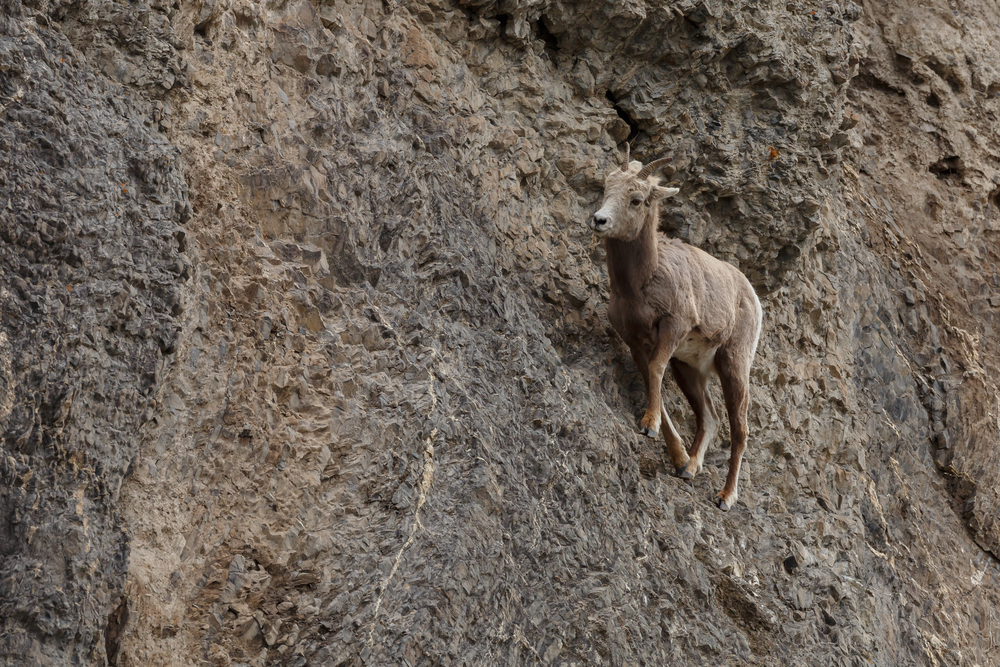ighorn Sheep and Mountain Goats are both adapted to life in the mountainous regions of North America, but they have distinct differences:
- Taxonomy: Bighorn Sheep (Ovis canadensis) belong to the sheep family (Bovidae) and are more closely related to other sheep species. Mountain Goats (Oreamnos americanus) are not true goats but are also part of the Bovidae family, in their own genus Oreamnos.
- Horns vs. Antlers: Bighorn Sheep have large, curved horns that they keep for life, which grow continuously and can be used to determine age. Mountain Goats have black, slender, pointed horns that also grow throughout their lives.
- Coat: Bighorn Sheep have a brownish coat that can vary in shade seasonally, with a white rump and white lining on the backs of their legs. Mountain Goats are known for their thick, white coats that allow them to blend into the snowy environments above the tree line.
- Habitat: While both are mountain dwellers, Bighorn Sheep often inhabit drier, rocky mountain slopes and foothills. Mountain Goats prefer the higher, more rugged cliff sides and alpine areas, often above the tree line where it’s colder and snowier.
- Social Behavior: Bighorn Sheep are social animals, often seen in flocks, with separate groups for males and females outside of the mating season. Mountain Goats are more solitary or found in smaller groups, though females may gather in nursery herds with their young.
- Body Size and Shape: Bighorn Sheep are heavy-bodied with a muscular build and a more balanced body proportion. Mountain Goats are stockier with a hump on their shoulders, a thick neck, and shorter legs, giving them a low center of gravity for stability on steep slopes.
- Agility: Both are agile climbers, but Bighorn Sheep are known for their ability to make great leaps and run fast. Mountain Goats are more deliberate in their movements, with a strong grip suited for steeper, less stable terrain.
These differences are adaptations to their specific environments and lifestyles. Bighorn Sheep are adapted to a variety of mountain habitats, including some lower elevation areas, while Mountain Goats are specialized for the harsher, higher altitude conditions





































































